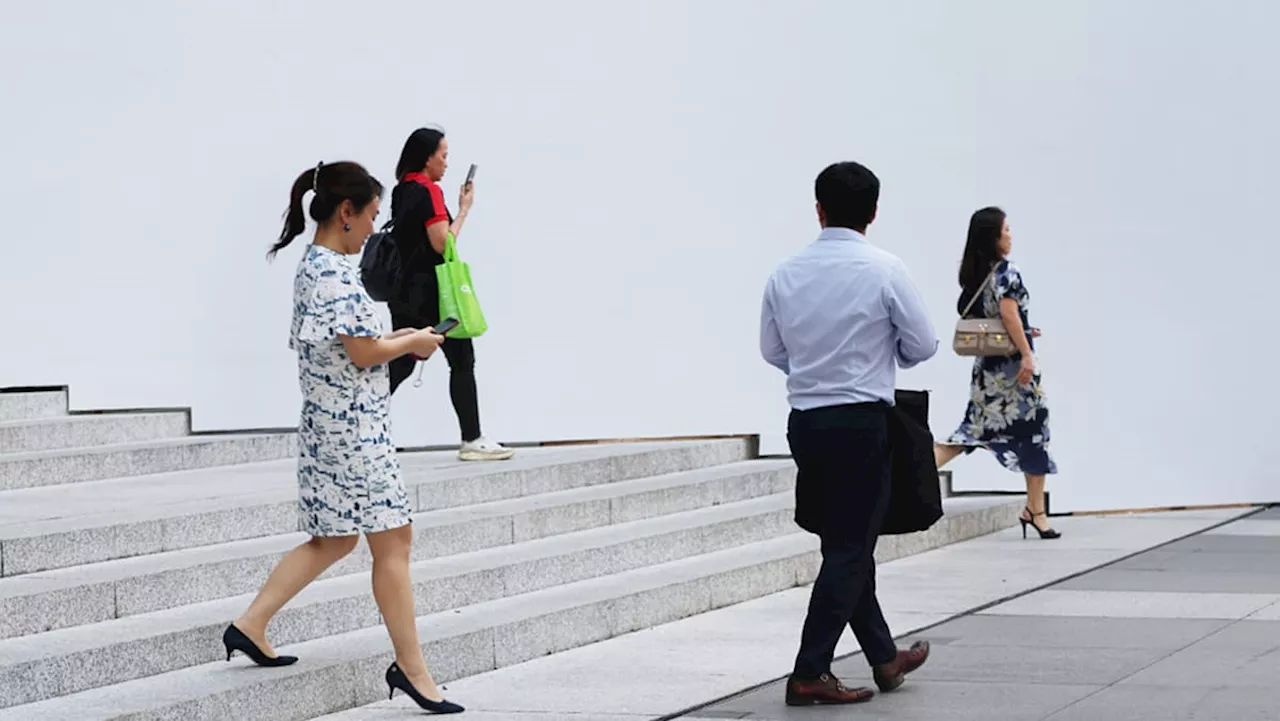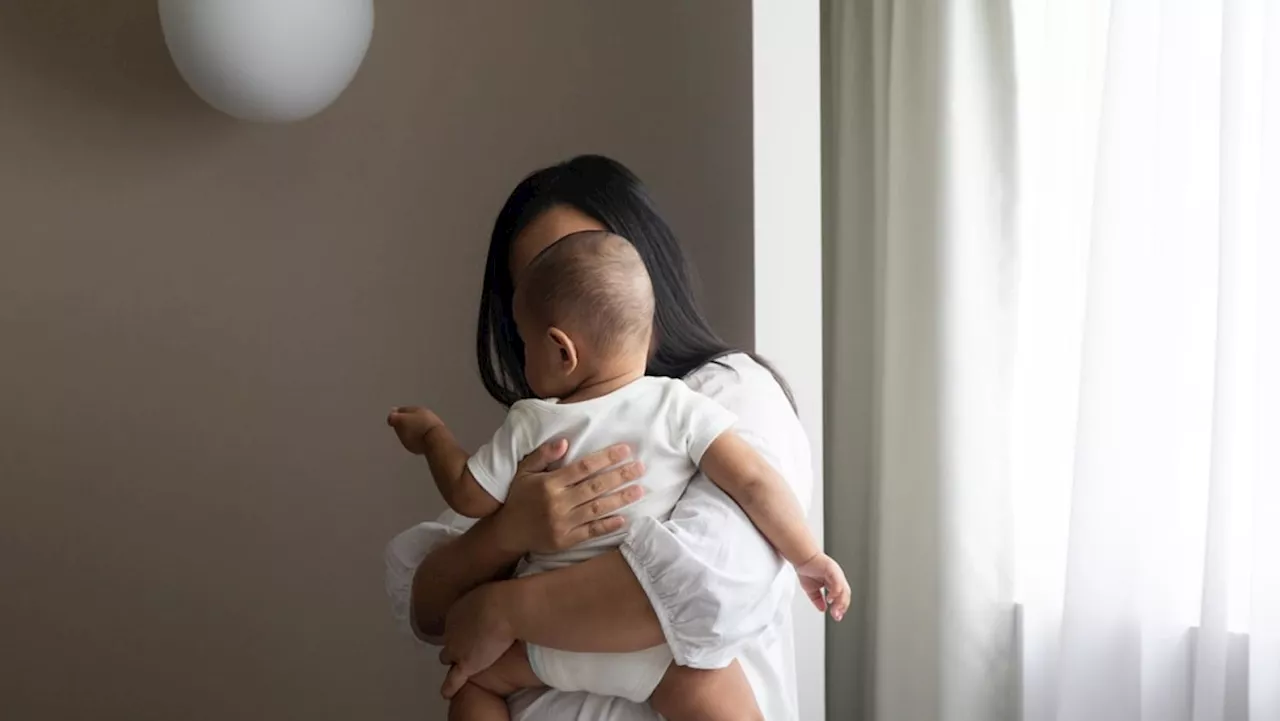SINGAPORE: Ever since the stringent no-visitor rule in hospitals was temporarily imposed at the height of the COVID-19 pandemic, Mr Paul Osmond George, who has ischemic heart disease and cardiomyopathy, has had a phobia of being hospitalised.
The 46-year-old’s condition is managed with medication to reduce fluid build-up and dilation of blood vessels to allow his heart to pump blood to the rest of his body.
“Receiving treatment in the comfort of my home was easier for me and my spouse,” Mr George said, adding that it also helped knowing that he could be admitted to the hospital if necessary. “I’ll be thinking and worrying about what is happening to my daughter,” said Ms Farzana. “We also don’t have a car, so I think it’d be quite difficult for us to commute back and forth to the hospital.”Newborns need to be fed about eight times a day, and it would not be feasible for Ms Farzana to be at the hospital for every feeding.
Setting up a “virtual ward” in her home was a seamless process. The phototherapy machine was delivered to her While virtual wards may still be a novelty for many Singaporeans, they are not new - similar models have been widely adopted overseas. In Singapore, the Ministry of Health launched the MIC@Home pilot in April 2022 as part of ongoing efforts to future-proof the healthcare system in a rapidly ageing Singapore.
“Many need convalescent care and rehabilitation, with the assurance that additional medical help is readily available,” added Mr Ong. Patients come from three main areas: The emergency department, inpatient wards and specialist outpatient clinics. Clinical Assistant Professor See Qin Yong at CGH noted that “patients are able to make an informed choice on whether to proceed with the home-based care”.
Other reasons patients do not take up MIC@Home include the lack of caregiving support at home or if their home environment is not suitable for [email protected] under MIC@Home are generally loaned monitoring devices, namely blood pressure monitoring sets, thermometers, and pulse oximeters, depending on their medical condition.
Just like a normal hospital ward, a specialist consultant is in charge of every patient admitted to the programme. The size of the teams and the number of patients they care for vary. NUH’s team, for instance, is 80 strong and consists of doctors, nurses, allied health professionals, and administrative staff. SGH@Home’s team is made up of 10 doctors and nurses.
Patients are also advised to stay at home for the duration of their recovery, as well as the diet and rest required.As MIC@Home relies heavily on stable internet, contingency plans are in place in the event of a sudden lost connection, which are also discussed with the family beforehand. “Patients can be assured that they will not pay any more for this service than they do in a public hospital as all our hospitals intend to price MIC@Home similar to or lower than a normal ward,” Mr Ong said.
Adjunct Assistant Professor Melvin Seng, also from SSHSPH, said he will not be surprised if MIC@Home costs more initially, as starting new programmes usually requires higher costs. Platelets help to clot a person’s blood and prevent excessive bleeding. When the platelet count is low, one may have trouble stopping bleeding.When Charlotte, 16, and Mr Tiam went to CGH, they had to wait 12 hours before she finally got a bed close to midnight and was warded for one night.
These vital sign readings will be automatically uploaded to CGH@Home’s command centre, where a medical team monitors patients around the clock.“I definitely felt well taken care of, as the nurses and doctor would call me if I didn’t take my blood pressure readings at my normal times,” said Charlotte.
“She appeared to be much more cheery and happier ... She also seemed to be less worried about her illness,” said Mr Tiam. Mr Singh needed antibiotics to be administered three times a day, and while hospitalisation was recommended, there were no beds available for him at that time.During his eight days under the programme, he received intravenous antibiotics at home, and the SGH care team went to his house daily three times a day to clean his wound and change bandages until he recovered.
Sarbjit Singh, who was diagnosed with a bacterial infection, received intravenous antibiotics at home, and the care team from SGH went to his house daily three times a day to clean his wound and change bandages until he recovered. Doctors and healthcare professionals say that there are many benefits to making the MIC@Home service mainstream.
“A lot of patients tell me, ‘the moment I go home, my appetite improves’. They love to see their children, sit in their favourite chair, hold their favourite mug, have their favourite pillow ... home gives a better, psychological and social environment,” he added. Furthermore, this lessens the physical load on both the medical and nursing teams by requiring them to make roundsA private-practice nurse who also runs the Instagram account SGNightingales added: “Emergency departments are crowded with new cases, including readmissions. With MIC@Home’s assistance, we can provide better follow-up care, reducing hospital admission rates.While Dr Wai supports MIC@Home going mainstream in hospitals, he is concerned about manpower issues.
In order for initiatives like MIC@Home to achieve mainstream success, public perceptions of traditional care need to change.SSHSPH said: “The public has to be convinced with data and evidence that such a new care model will not compromise their recovery, and also have an open mindset for this paradigm shift in the evolving forms of healthcare in Singapore with the times.”
Still, while patients and their caregivers who participated in MIC@Home have praised the initiative, some people remain sceptical.But he would still not choose to recover at home if given the option even though he believes MIC@Home is a good initiative to lessen the load for hospitals. While those under MIC@Home are given a number to call in case of medical emergencies, Mr Ng said this does little to make him feel safe if his medical condition were to take a turn for the worse.
While she understands that medical staff are just a phone call or message away, having them physically present or nearby would instantly assuage any doubts or concerns that she has about her recovery.
South Africa Latest News, South Africa Headlines
Similar News:You can also read news stories similar to this one that we have collected from other news sources.
 The Big Read in short: Would publicising litterbugs' photos do the trick?SINGAPORE — Redhill resident John Posko Amalaraj would sometimes return home to an eyesore — discarded leftover drink cartons in the lifts at his Housing Development Board (HDB) block.
The Big Read in short: Would publicising litterbugs' photos do the trick?SINGAPORE — Redhill resident John Posko Amalaraj would sometimes return home to an eyesore — discarded leftover drink cartons in the lifts at his Housing Development Board (HDB) block.
Read more »
 The Big Read in short: Time to get serious about SkillsFutureSINGAPORE — Whenever her air-conditioning unit broke down, Dr Chua Yen Ping used to wonder what needed to be fixed when the repair man could solve her woes in just minutes.
The Big Read in short: Time to get serious about SkillsFutureSINGAPORE — Whenever her air-conditioning unit broke down, Dr Chua Yen Ping used to wonder what needed to be fixed when the repair man could solve her woes in just minutes.
Read more »
 The Big Read: Show and shame litterbugsWould it be a step too far or just what's needed to curb the scourge?
The Big Read: Show and shame litterbugsWould it be a step too far or just what's needed to curb the scourge?
Read more »
 The Big Read in short: Plugging the gaps in babysitting servicesSINGAPORE — When her six-month old baby contracted hand, foot and mouth disease and was given a one-week medical certificate, Ms Joanne Chong turned to Facebook to engage a nanny or babysitter.
The Big Read in short: Plugging the gaps in babysitting servicesSINGAPORE — When her six-month old baby contracted hand, foot and mouth disease and was given a one-week medical certificate, Ms Joanne Chong turned to Facebook to engage a nanny or babysitter.
Read more »
 The Big Read: MSF's Childminding Services Pilot Aims to Solve Babysitter ShortageParents in Singapore face challenges in finding affordable and available childcare support for their infants. MSF's childminding services pilot program aims to address this issue by providing good and affordable babysitters. The program hopes to alleviate the childcare burden on parents and ensure the well-being of infants.
The Big Read: MSF's Childminding Services Pilot Aims to Solve Babysitter ShortageParents in Singapore face challenges in finding affordable and available childcare support for their infants. MSF's childminding services pilot program aims to address this issue by providing good and affordable babysitters. The program hopes to alleviate the childcare burden on parents and ensure the well-being of infants.
Read more »
